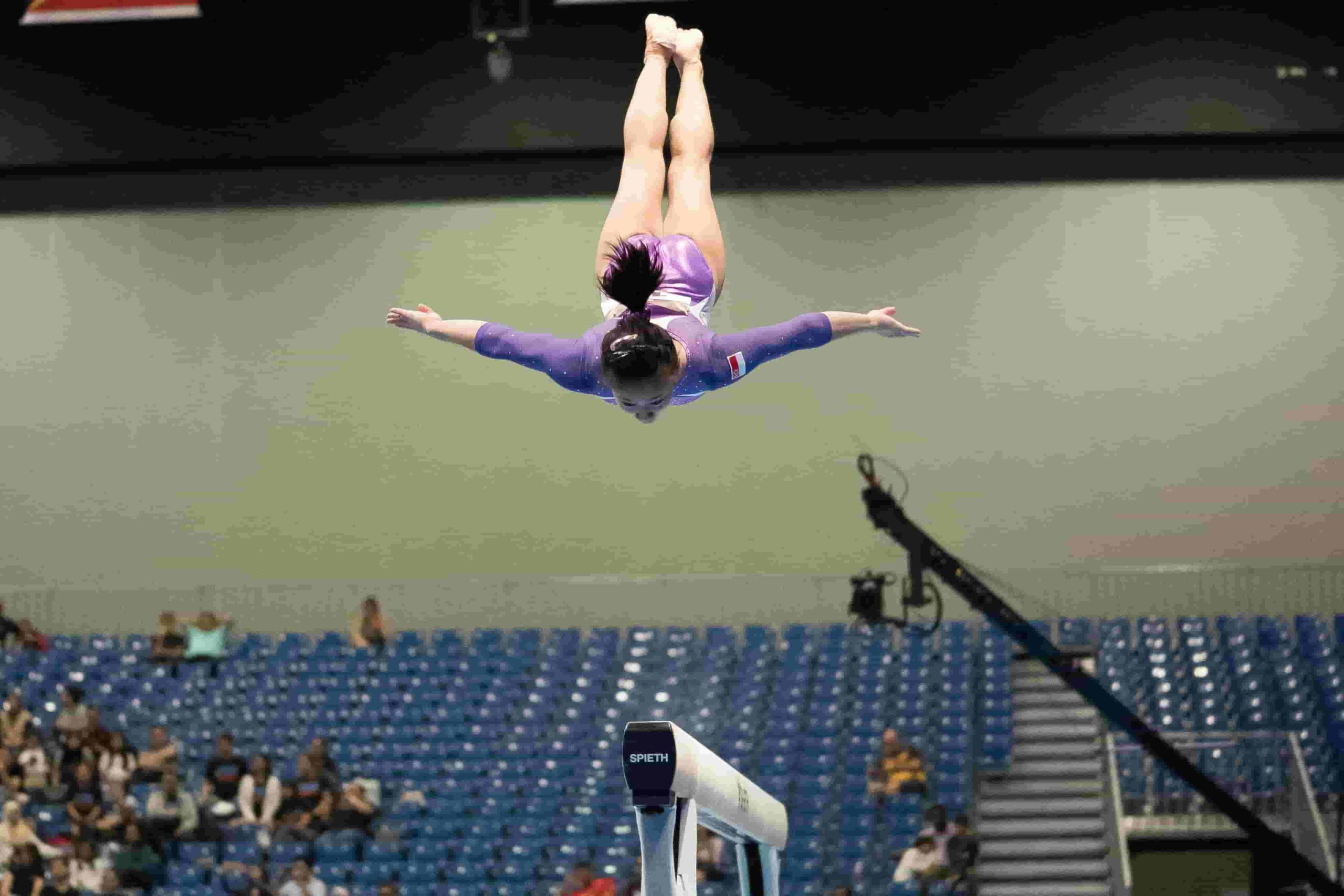Introduction:-Sports acrobatic gymnastics is a breathtaking discipline that seamlessly combines strength, flexibility, and grace, creating a mesmerizing display of human capability. Unlike traditional gymnastics, sports acrobatic gymnastics involves dynamic partnerships, where athletes work in pairs or groups to execute choreographed routines that showcase a harmonious blend of athleticism and artistry.
History: The roots of sports acrobatic gymnastics can be traced back to ancient civilizations that celebrated physical prowess and aesthetics. However, the modern form of the sport emerged in the 20th century as gymnasts sought to push the boundaries of traditional gymnastics. The International Gymnastics Federation (FIG) officially recognized sports acrobatic gymnastics as a distinct discipline in 1999, cementing its status as a unique and challenging branch of gymnastics.
Disciplines and Categories: Sports acrobatic gymnastics is divided into several categories, each with its own set of requirements and rules. The primary categories include Women’s Pair, Men’s Pair, Mixed Pair, Women’s Group (three gymnasts), and Men’s Group (four gymnasts). Each category demands a specific combination of strength, balance, and coordination, challenging athletes to master a diverse range of skills.
Skills and Elements: Athletes in sports acrobatic gymnastics perform a variety of skills and elements that highlight their strength, flexibility, and synchronization. These include lifts, throws, balances, and dynamic movements that require precise timing and control. The choreography often incorporates dance and artistic elements, elevating the performances to a form of visual poetry in motion.
Strength and Conditioning: The physical demands of sports acrobatic gymnastics are immense, requiring athletes to undergo rigorous strength and conditioning training. Strength training focuses on building the muscle groups necessary for lifts and supports, while conditioning ensures that gymnasts maintain the stamina required for extended routines. This combination of strength and endurance sets sports acrobatic gymnastics apart as a formidable test of physical fitness.
Artistry and Expression: Beyond the physical prowess, sports acrobatic gymnastics places a strong emphasis on artistic expression. Athletes are not only judged on their technical execution but also on their ability to convey emotion and tell a story through their performance. This integration of athleticism and artistry adds a unique dimension to sports acrobatic gymnastics, captivating audiences and judges alike.
Training and Dedication: Success in sports acrobatic gymnastics is the result of years of dedicated training and unwavering commitment. Athletes often start training at a young age, honing their skills under the guidance of experienced coaches. The intense training regimen includes hours of practice each day, focusing on perfecting individual elements, refining choreography, and building the trust and communication essential for partner and group routines.
Competition: Sports acrobatic gymnastics competitions are a spectacle of skill and precision. Athletes are judged on technical difficulty, execution, artistry, and overall presentation. The partnerships and groups that seamlessly combine these elements are the ones that stand out on the competition floor. International competitions, including the World Acrobatic Gymnastics Championships, provide a platform for athletes from around the globe to showcase their talent and vie for top honors.
Challenges and Risks: While the sport is undeniably captivating, it is not without its challenges and risks. The intricate lifts and dynamic movements carry the potential for injuries if not executed with precision. Athletes and coaches must prioritize safety, ensuring that proper progressions and spotting techniques are employed during training to mitigate the risks associated with the high-flying nature of sports acrobatic gymnastics.
Evolution of the Sport: Sports acrobatic gymnastics continues to evolve as athletes push the boundaries of what is physically possible. The introduction of new elements, combined with advancements in training techniques and equipment, contributes to the constant progression of the sport. As the community of sports acrobatic gymnastics grows, so too does the level of competition, inspiring athletes to reach new heights in their performances.
Inclusivity and Diversity: One of the strengths of sports acrobatic gymnastics is its inclusivity. The sport accommodates a range of body types and sizes, allowing athletes to find their niche within the various categories. This diversity adds richness to the sport, showcasing that excellence in sports acrobatic gymnastics is not limited by conventional expectations but rather celebrates the unique strengths of each athlete and team.
Conclusion: In the world of gymnastics, sports acrobatic gymnastics stands as a testament to the limitless possibilities of the human body and spirit. Combining strength, flexibility, and artistry, athletes in this discipline defy gravity and captivate audiences with their breathtaking performances. As sports acrobatic gymnastics continues to gain recognition and popularity, it undoubtedly secures its place as a dynamic and awe-inspiring form of athletic expression.


